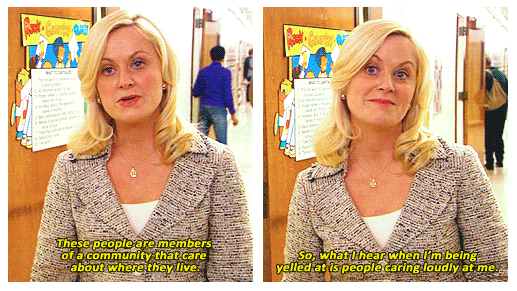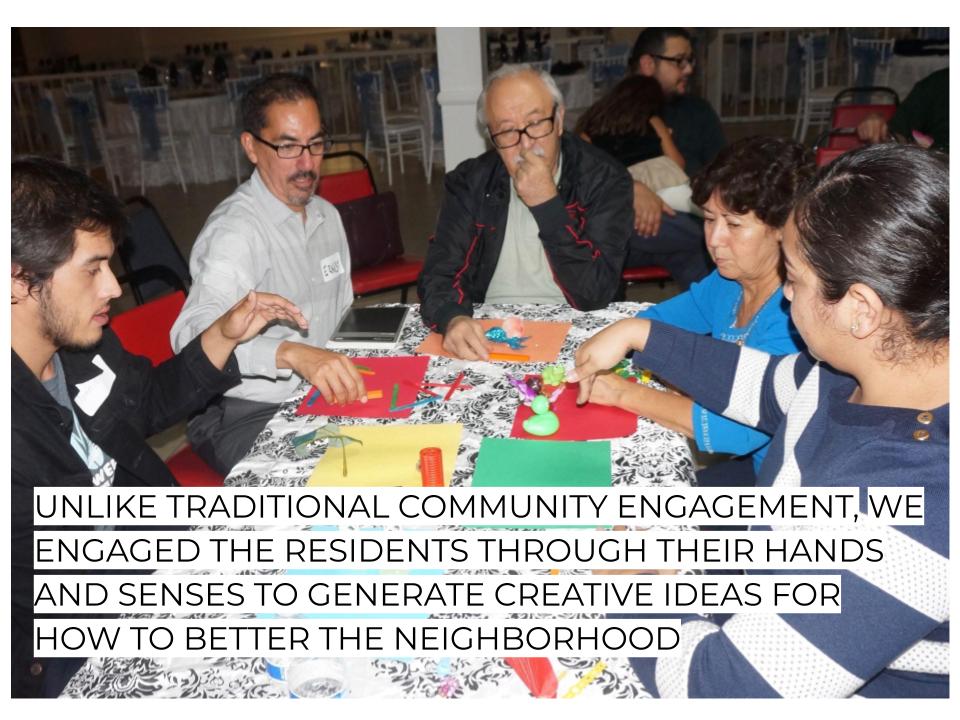
There’s a scene in NBC comedy “Parks and Recreation” that has now become famous among civically-engaged folks. It takes place in the pilot episode, when Deputy Director Leslie Knope explains her views on community meetings.
“These people are members of the community that care about where they live,” she explains. “So what I hear when I’m being yelled at is people caring loudly at me.

This idea — that when people are yelling in a community meeting, they’re just very passionate — is a hard one to remember, especially when someone is shouting at you about parking, traffic, or housing.
But according to John Kamp, it’s true. It’s also hardwired into us.
“When we use language alone to engage people around these issues in the public meeting setting, it really favors a certain kind of person who is willing to stand up and speak,” explained Kamp during our recent webinar, “Dream Play Build: Hands-On Community Engagement for Enduring Spaces and Places.”
How can we engage with our communities without using language alone? Kamp and his partner, James Rojas have the answer.
Place It!: Making Community Meetings Fun
Their unique approach, called “Place It!,” encourages members of the community to use multiple forms of communication, rather than relying on public speaking alone. Place It! is “a design- and participation-based urban planning practice,” according to their website. Rojas, the founder, is both an urban planner and an artist.
From the website:
“At its core, Place It! engages people in urban planning, transportation, design, landscape, and neighborhood change through their hands and senses so that they can be creative and expansive in their thinking and offer up real solutions to the challenges facing our cities and neighborhoods.”
This approach, says Kamp, helps overcome one of the fundamental issues with most community meetings.
“Public speaking is something that a lot of people are afraid of. We interviewed various psychologist use art making in their practice for the book,” explained Kamp. “They said amongst their clients that is probably one of the number one fears is public speaking. It’s not like we are all hardwired to be good at public speaking. In fact we are hardwired to really fear it.”
By using modeling with found objects, sensory walking tours, impromptu pop-ups, and prototyping events, Kamp and Rojas have removed the fear and anxiety around public speaking. Instead of “caring loudly,” PlaceIt! participants are encouraged to actually engage and even play.

Bringing More People Into Community Meetings
PlaceIt! also makes community engagement more approachable. Many members of the community may wish they could get involved. Unfortunately, traditional meetings are not feasible for everyone. People who prefer to meet and talk in languages other than English. Families with kids. People who work during regular business hours. For these groups, a PlaceIt! pop-up might be a much better fit.
“There are all these different ways we can affect change in our environments on an urban planning level that don’t have to do with urban planning or an urban planning department,” said Kamp.
Additionally, Kamp explained, this model provides a huge benefit to people in positions of power, too.
“You can have a visioning meeting [or] a model building workshop. Share the results, then, with your elected officials. You could even invite an elected official that workshop. That’s really effective. A lot of elected like coming to these workshops.”
Unlike traditional community meetings, which often leave people feeling bitter or put off, PlaceIt! meetings bring the community together.
“People really want to make change to their neighborhoods…and thinking what kind of tools can be used. It’s really a partnership of people who have the same kind of interest. That want to make changes in their neighborhood in a very positive way and they find useful,” said Rojas.
Watch the Webinar Here:
Additional Resources:
- PlaceIt! website
- Latino Urbanism Is Changing Life in American Neighborhoods
- 99% Invisible episode featuring James Rojas
- Why Old Buildings Are the Key to Transforming a City
- Collaborative, sensory-based community engagement for a more equitable bike/pedestrian environment
Get the Book!
In Dream Play Build, Kamp and Rojas share their insights into building common ground and inviting active participation among diverse groups. Dream Play Build offers wisdom distilled from workshops held around the world, and a deep dive into the transformational approach and results from the South Colton community in southern California. While much of the process was developed through in-person meetings, the book also translates the experience to online engagement—how to make people remember their connections beyond the computer screen.